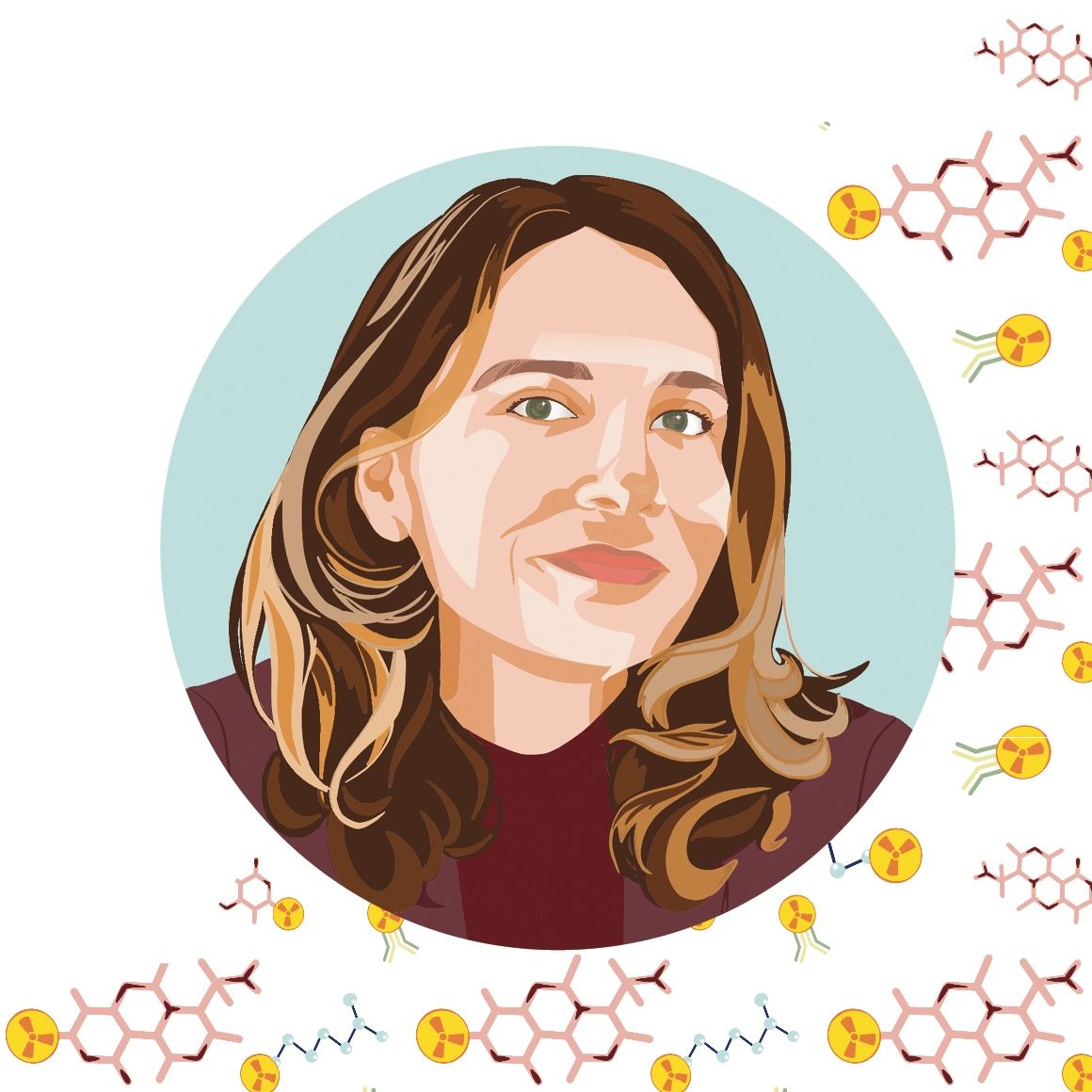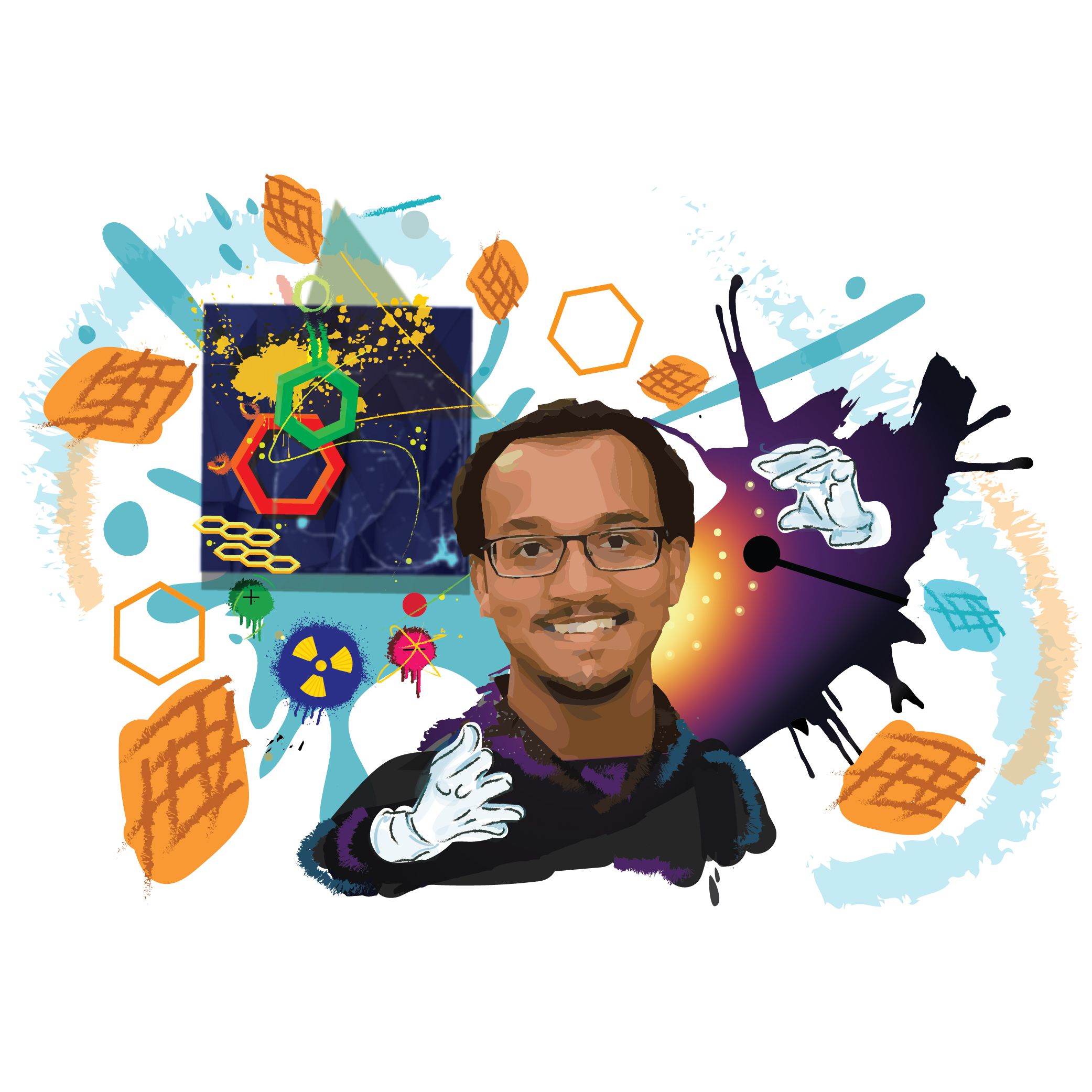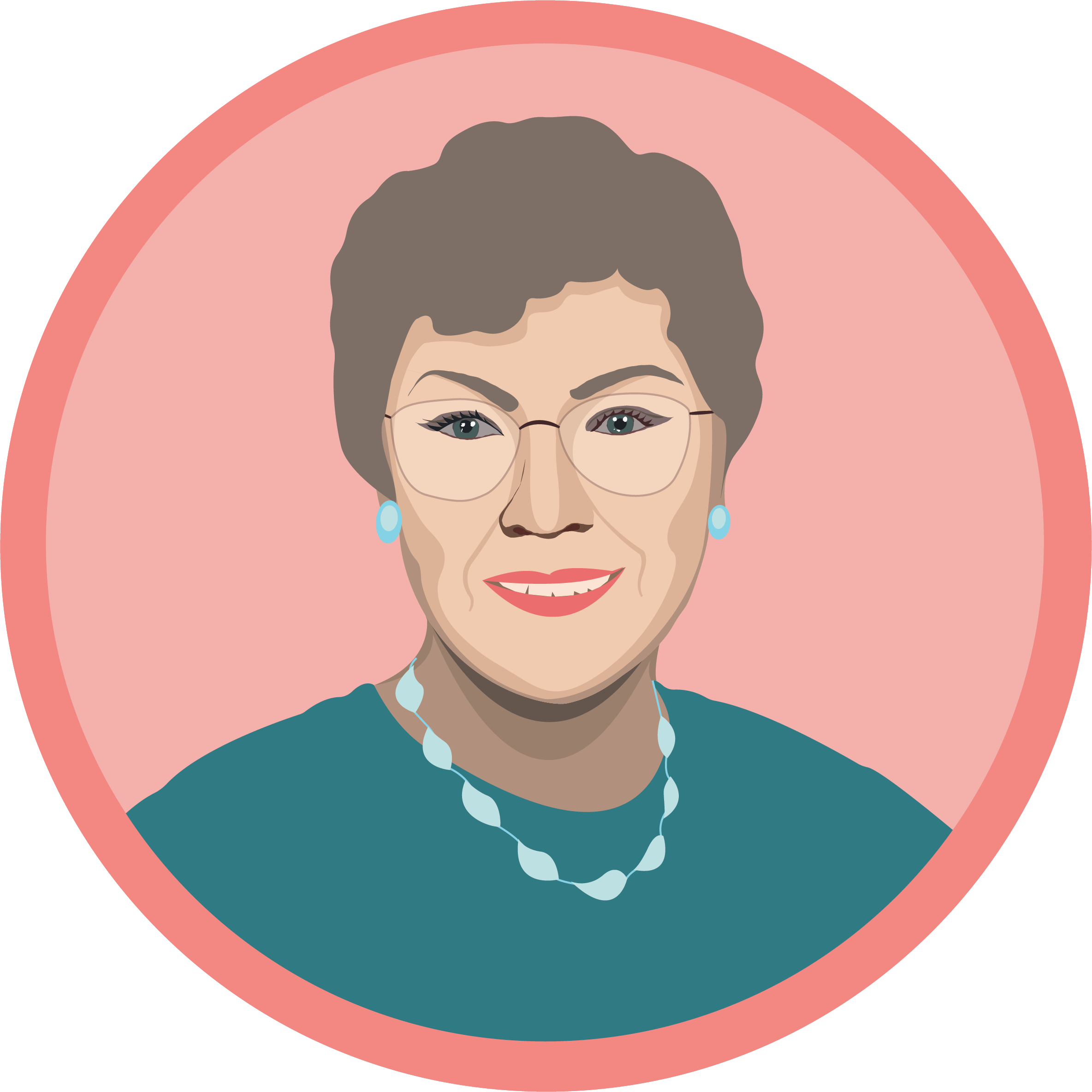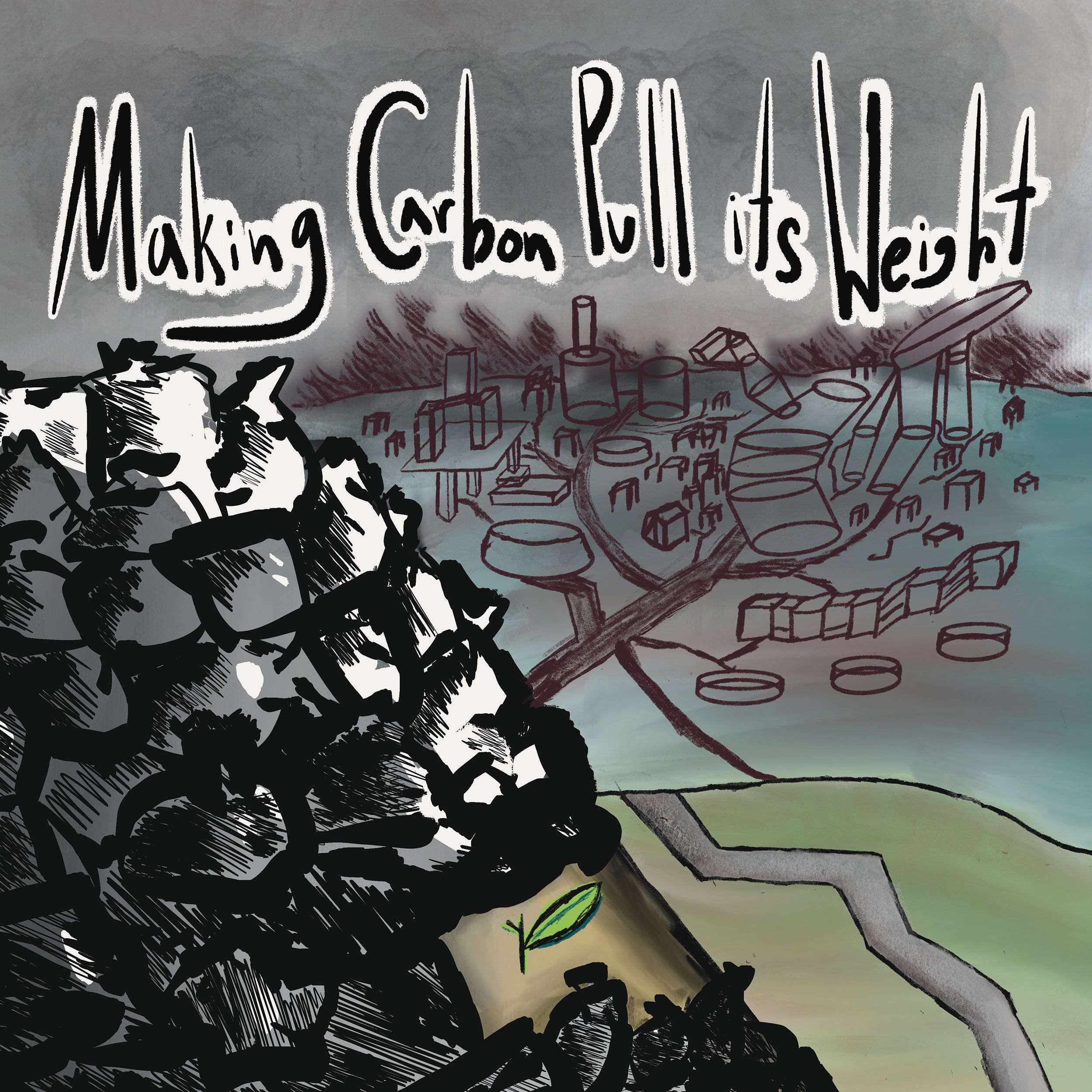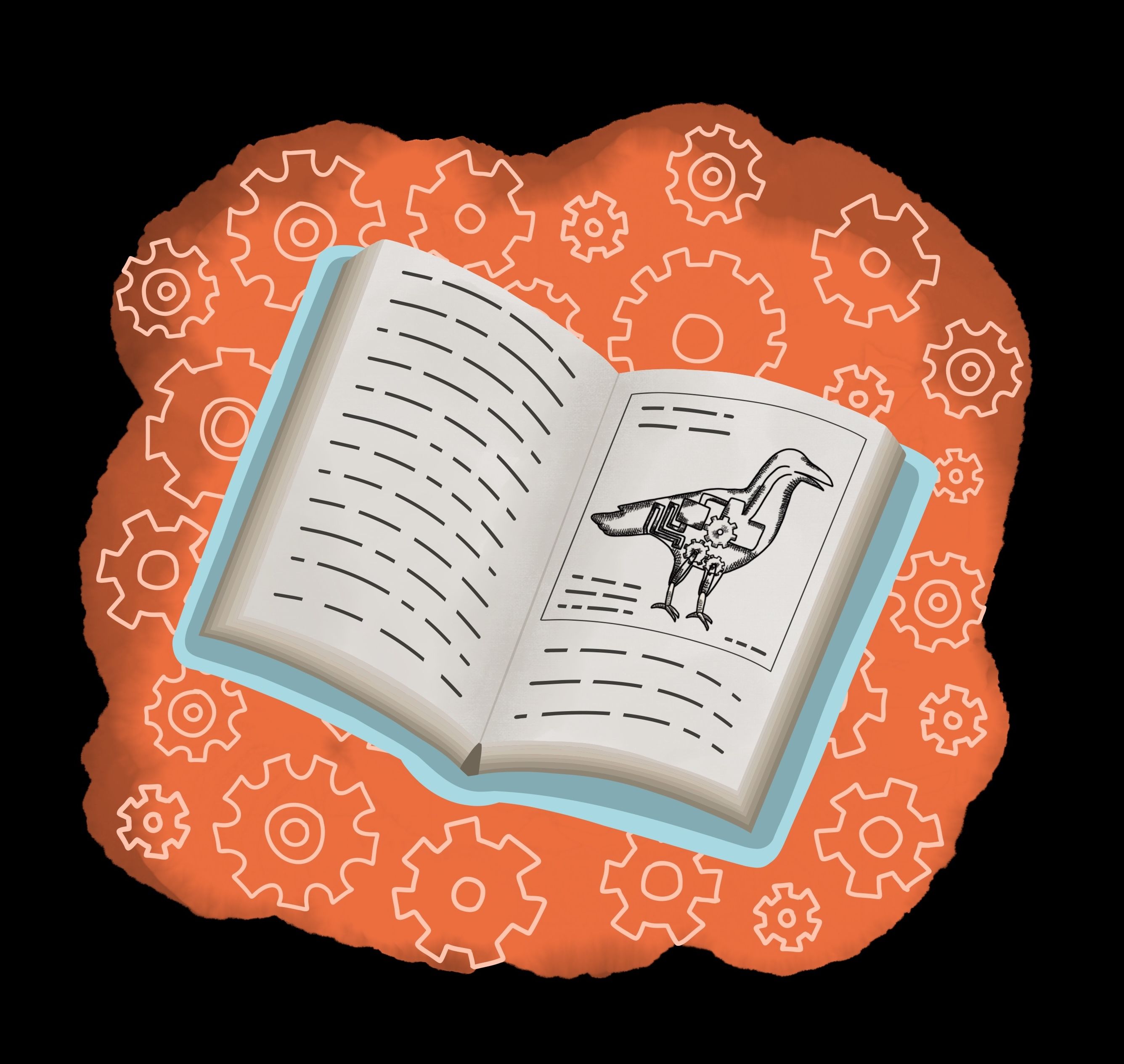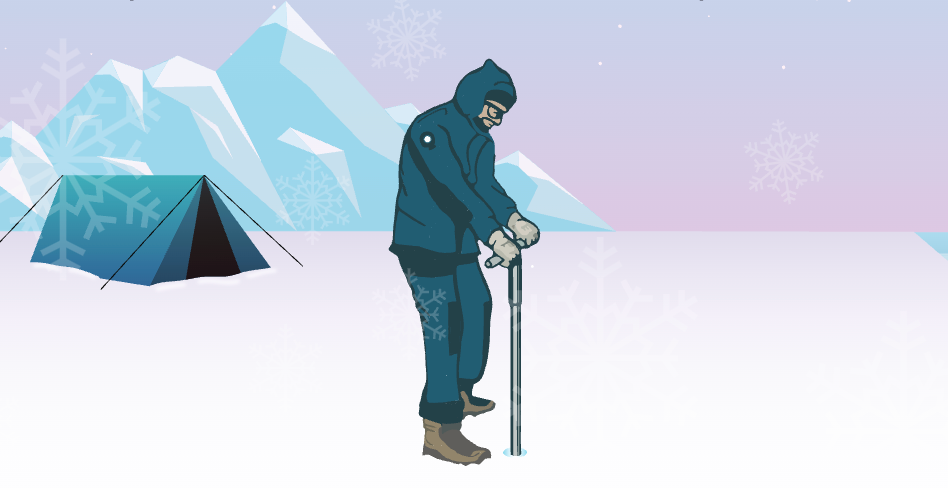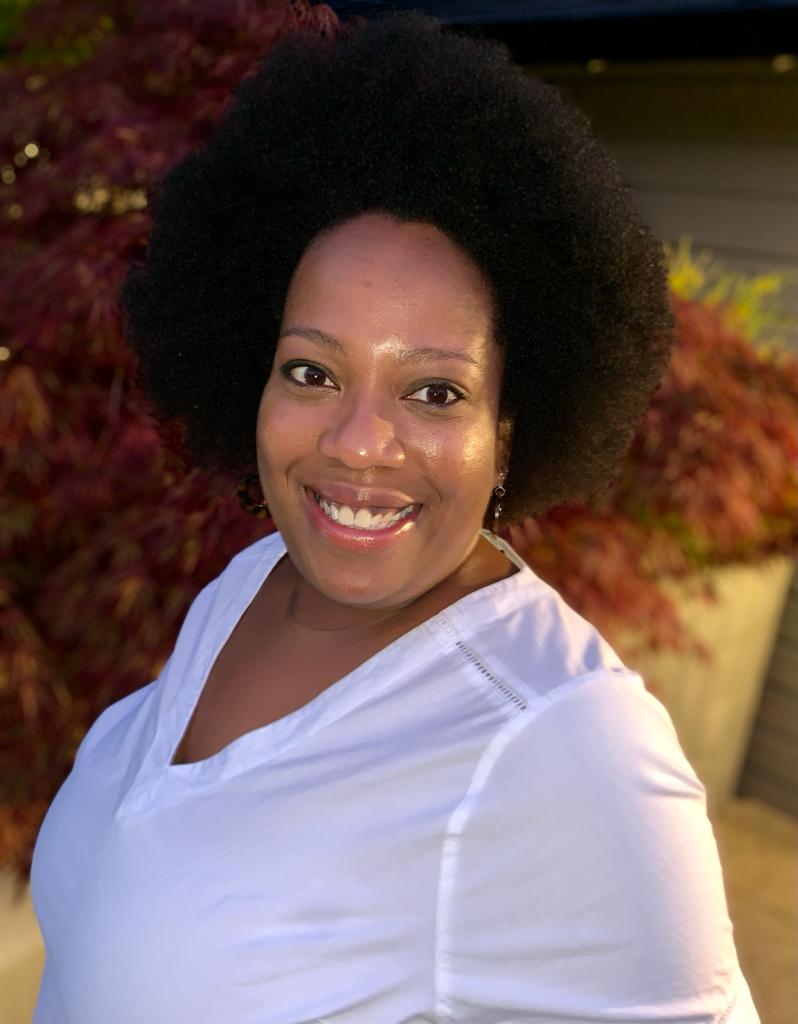
This article is part of STEMinism in the Spotlight, a monthly interview series.
Khalilah Beal-Uribe is a lecturer in UC Berkeley’s Department of Mathematics and a math professor at College of Alameda. After graduating with her BA from Howard University, Dr. Beal-Uribe earned her PhD in Mathematics from UC Berkeley. She first started teaching courses at Berkeley as a graduate student. After earning her doctorate, she transitioned to being a full-time lecturer. She wants students who take her class to not only master the material, but also embrace their potential. “Math isn’t out there,” she says. “It’s a tool, something we use – not a scary, sacred goal in and of itself.”
Amanda Glazer (AG): Let’s start with a little bit about you. How did you decide you wanted to be a mathematician?
Khalilah Beal-Uribe (KB): I completed my undergraduate education at Howard University in Washington, D.C, which also awards the most doctorates to people of the African diaspora. As an undergrad, I majored in chemistry. I took all the theory classes, but I’d find reasons to not take labs, which are kind of essential. [Laughs] I knew I wanted to continue my education; I didn’t want to just stop at a bachelor’s. So, I had to step back and do what I should have done as a freshman: I thought about what I liked and took a year to sample and dabble.
I loved the African American Studies and math courses I was taking. I thought I might be able to do math long term, but I hadn’t done it enough to really know. I needed to be sure that it wasn’t just the community of people, but that it was something that I actually liked because at Howard I was able to take math classes with grad students and undergrads. It was fun and I was lucky to get to hang out with amazing people. But becoming a mathematician was different. In order to figure out if math was something I should pursue, I participated in a summer research program. I enjoyed the research and said, “Okay, yeah. I can do this.” And I did.
AG: Why did you choose to pursue a PhD?
KB: Privilege. I think that there was a privilege to me thinking, “Oh, do I feel like doing it? Yes, I do feel like doing it.” I didn’t have to get a job, like so many others do, to help out my parents or my little brother or sister. I didn’t have to raise a child. I am very conscious of how great a privilege it was to be able to continue to study full-time, unencumbered by the obligations that consume most talented people.
The flip side of that was the unrelenting sense of obligation. It’s always on my shoulders, the awareness of the opportunities that my ancestors and family didn’t have, the opportunities that they were denied but of which I get to take advantage. I had the ability and the talent, so I thought, “All right, let me go ahead and try to hoe this row.” It felt decadent in a sense. I felt a tremendous responsibility to see it through to the end.
The people who love and support me were what got me through. They had this incredible belief in me that I wanted to live up to. I had so many people who told me I could do it, who were rooting for me. I did not have that story of being told, “You’re no good.” That was not my story. I remember a teacher in middle school calling me Dr. Beal. That’s so beautiful and amazing. I had people saying all the time, “You can do this if you really want to do it.” I couldn’t waste this opportunity, and I didn’t want to let people down. I thought, “Let me try my best.”
Now don’t get me wrong, there were always people who doubted me. There are always haters, sippin’ on that haterade. [Laugh] But they’re outliers. They don’t count.
Another thing that helped me pursue graduate work was a love of learning. I love digging down deep, not just skimming the surface intellectually. I think you need that fundamental curiosity and tenacity when it comes to questioning. I have always been one to question things. I like to question what is, why things are the way they are, and think of all the different branches in the question tree.
AG: Was your PhD in analysis?
KB: Yes. It was in partial differential equations (PDEs). I combined an approach in analysis, viscosity solutions, with problems from risk theory. Daunting as it sounds, it was really cool. Often students don’t understand how advanced math functions in the real world. But in insurance, for example, there are numerous applications. Insurers try to assess and calculate risk. Broadly speaking, what I did was apply these viscosity solution and perturbation methods to problems in risk. The point of my research was to see if we can take these methods that are traditionally PDE methods and apply them in this new arena.
AG: Can you tell me about your time at Berkeley as a student and the path that led to you becoming a lecturer?
KB: I came into the department through a special program for people who had a non-traditional math background. Most of us brought in that year weren’t math majors in undergrad. The first year we took undergraduate honors math courses for the most part, and then we went on to the grad courses.
It went well in the beginning, but then I ran into health issues that impacted my ability to finish my coursework along the traditional GSI (Graduate Student Instructor) schedule. I was fortunate enough to get other fellowships and scholarships. Doing the coursework in a different sequence created a bit of a catch-22. You’re supposed to hit these marks by certain times and if you sit out then you lose your insurance. I also had the stress of trying to figure out Berkeley, as someone from the East Coast, and being a minority in so many other ways.
The math department was unbelievably supportive. I switched advisors, had medical issues and more, but they stuck with me. Having my own funding made a huge difference, it drives a lot of decisions. In undergrad, I was starry-eyed. I didn’t really plan for the possibility of anything but full-blown success. I didn’t ask myself how I’d make things work financially if X happened or if Y happened or if getting my PhD took much longer than I thought.
During grad school, I worked with the Professional Development Program and Cal NERDS. I enjoyed it so much that it motivated me, after I got my degree, to actually go and work full-time as a community college instructor. It’s where black and brown students are. As for Cal, I wanted to teach here because that was missing from my experience as a student. There was a lot of diversity within the math faculty at Howard. I haven’t seen that here at Cal.
AG: What was your transition like coming to Berkeley? You mentioned that it was very different to live in California, having come from the East Coast.
KB: Things were different in a lot of ways. It was different being far away from my family. That was a really big deal. Also, I didn’t realize how few Black people were in California. I grew up in the metropolitan Atlanta area, where I saw plenty of Black people in all stations of life. You couldn’t go for days without seeing a Black person like you can here. Then I went to D.C., which is a really vibrant place. Howard University was only one of a number of universities – George Washington, Georgetown, Gallaudet, American University. Everything took place against the backdrop of national politics in this cosmopolitan place. There were plenty of people from around the world. Just a lot of diversity. So, I think Cal was a big shock for me, culturally.
I also found it intimidating. I had been around smart people before, of course, but it wasn’t like everyone came in at approximately the same place or needed to learn the same thing. Some students had read so much, done so many other things. It seemed like the Wild West in a way. But then, I can say the same thing was true at Howard, I guess. But, yeah, there were insecurities that came out for me, being at Cal. I remember thinking “Am I supposed to be here if you’re also here and you’re actually cited in the textbook?”
Maybe it doesn’t matter where you are, you don’t really know where someone’s come from or their whole story. You don’t necessarily have to understand why they are next to you.
AG: Do you have any favorite memories from Berkeley or from teaching?
KB: Walking across the stage at graduation is a memory that I will never forget. I totally milked it! [Laughs] I had on the highest high heels so I walked very slowly, because I didn’t want to fall. That was calculated. My entire family flew in, including one of my sisters who had flown in from Belgium. I couldn’t hear them because I was in my own cloud, but they were cheering. I thought of all the times when I had hesitated or doubted. But when I would be having these thoughts, I told myself that I needed to finish this. I told myself that I might have all these great ideas, but it wouldn’t matter if I quit. So, to actually finish, to get my PhD, was a big deal. It validated my voice, for some. Some people are not going to hear you unless you have the degree. So that was definitely big, having that sense of meaning and fulfillment in that moment.
AG: What do you like about teaching and what aspects do you think are most important?
KB: I like working with students, connecting with them. That’s harder to do in this pandemic, though. I like seeing students be proud of themselves. I like it when students feel confident, proud of what they have accomplished. I like helping them get there. I also like the flexibility.
I try, as much as possible, to demystify math. I try to convey, by how I speak, carry myself, and interact with students, that math is not some scary, sacred goal to reach. Math is what you do with math. You’re doing math, I’m doing math, she’s doing math, he’s doing math, they’re doing math. Math isn’t out there. It’s a tool, something we use. There are ways that are better and ways that are worse, so it’s not a free-for-all, but you can do it if you want to do it. I can help you do it. Let me show you that you don’t have to be whatever you’re thinking you have to be in order to be a mathematician. Broaden your definition. I also hope that I convey that math is beautiful.
Teaching is always going to be a challenge because there’s always a way to improve. I try to teach students that it’s valuable to work with other people. Collaboration is valuable. Creativity is valuable. Technology is important. I’m working on a grant with a team to work more on that bridge from community college to university. I really like extending that hand to help students along. I try to do things that are creative and a little different. Push them where they might not be used to being pushed.
AG: What are you teaching right now?
KB: At Cal I’m teaching Complex Analysis, which is Math 185, one of the last math courses before graduation. It’s a really fun course—well, I think it’s fun! You have the students that are done and ready to be out, and the students that are like, “No, I’m not done—give me more! I want to go to grad school, and I want another serving of this.” It’s a little different this year with COVID, but there’s still that exhilaration, and students are still excited and talking about their plans for the future.
I also really like to teach 104, Real Analysis. So, I always want 104 and 185. Typically, students take 185 right after they take 104, because 104 is a prerequisite for 185. I’ve had a few years where I’ve been able to teach 104 in the Fall and 185 in the Spring. I’ve had returning students and that’s really nice because I get to spend longer with them.
Teaching at College of Alameda is also great. Some of my students know I’m a lecturer at Cal and they’re able to kind of test themselves when they take my course. They think, “What’s it going to be like? Can I do it?” and that’s really great because I feel like I’m helping to get more students from non-traditional backgrounds into the pipeline.
AG: How have you seen things evolve at Berkeley and in mathematics for women and people of color?
KB: Things are going in the right direction. Progress is slowed down by a certain mindset that is part of the culture of this field. I remember someone came to talk to us at another summer program I participated in, and he said, “Look, we don’t care about race. We’ll hire a dog if a dog can do it. We just want the job done.” Something like that. That was shocking and hurtful to me because it seemed like he was saying the reason why you don’t see Black people in STEM fields is because they just can’t do it. “No black people were qualified, and no dogs were qualified.” [Laughs] It’s absurd. There’s something about the way math is done that makes people think, “Oh, this is not a problem of ours. We’re color blind. We just care about the numbers.”
I think that instead of “150 Years of Women at Berkeley,” it should be “150 Years of Non-males,” or something that is more inclusive. I would say most recently what I’ve really appreciated, and I think it’s going to get a whole bunch better, is that more people express different gender roles. I’ve been seeing more recognition of gender. It’s now more often acknowledged in emails that students have lives. People are being encouraged to care about their students as humans.
We’re seeing more students of color overall, and for women of color, in particular—keep in mind that my sample is biased because I only see the students who are taking my classes— it seems like the culture is changing for the better. There is a lot more to be done, when it comes to expanding the numbers of Black women. I think it takes active recruitment, support for students while they’re here, and bringing lots of students. Not just one or two students, because then that’s a lot to carry on your shoulders. Let’s just integrate this thing. Integrate it!
There just has to be sustained institutional commitment and aggressive investment in programs like Edge, a program for underrepresented students, where you’re bringing in a cohort. Mind you, the cohort that I came in with, the six of us, was maybe half male and half female, and it wasn’t race-based, maybe because they’d banned affirmative action.
AG: Which I thought would be brought back this year, but I guess not.
KB: It hasn’t been brought back but we’re making progress in other ways. I don’t focus on being female too, too much and it might just be because of my personal gender roles and things I’ve gone through. But I do believe that it all goes together, so when I see emails and responses, and I’m participating in department meetings where people are discussing the mental health of students, I weigh in because it matters. I remind people of the impact of not having access to technology. It is so important for people in academia to recognize that not all class-based assumptions are valid, i.e., some people are not living in an apartment that their parents have paid for. We have to remember that not everyone has these things that we are assuming are “basics.”
Last year with George Floyd, I wept when the department sent out something acknowledging that some people are really hurting and touched by this. I don’t think that something like that would have been sent out 15 years ago. I couldn’t believe it. I really do feel like the math department is getting better. No, they’re not perfect. Just look at the numbers and you’ll see where improvements need to happen. But I wouldn’t spend my time here if I thought it was a lost cause. I think things are on the rise.
AG: That’s really encouraging. I feel like it’s so important to see someone’s whole self.
KB: Yeah, and that speaks to a lot of people. I have students with children and students who are children. So just recognizing that there is more than one type of student and not gearing everything for that prototype that you think you have, which you don’t, is critical.
-------
Amanda Glazer is a graduate student in statistics
Photo courtesy of Khalilah Beal-Uribe
